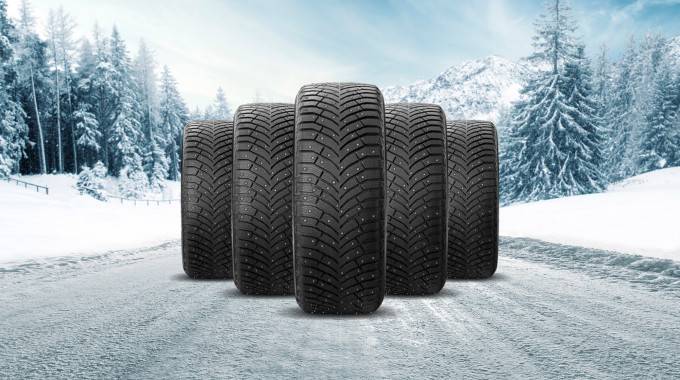
How Your Annual KMs Per Year Impacts Car Value, Insurance & Lease
In 2019, the CBC reported that Oshawa, Barrie, Toronto and Hamilton were home to the highest proportion of commutes one hour or longer– with Ottawa, Calgary and Edmonton reporting the lowest. Elsewhere, for Canadians choosing to move away from crowded cities, longer commutes to work may become a new fact of life.
Of course, the amount of driving you do in a given year has impacts on your vehicle, your wallet, and your lifestyle – but what is the average distance driven by Canadians in 2022?
That’s a question without a great answer. In recent years, supply-chain issues, exploding fuel costs and pandemic-related factors have wreaked havoc with driving habits from coast to coast. A quick web search reveals that Natural Resources Canada (NRCan) once reported the average figure to be 15,200 kilometers per year, but that’s based on a 2008 report.
Today, NRCan uses a figure of 20,000 kilometers per year when calculating annual fuel costs for vehicles, and that same 20,000 kilometers is considered a standard annual allowance for car leases.
If you drive between 15,000 and 20,000 kilometers per year, you’re a perfectly average Canadian motorist. Of course, your results may vary.
The number of kilometers per year you drive affects vehicle ownership in at least 3 important ways.
Resale Value
The resale value of a car or truck is the amount of money it’s worth when you eventually trade it in or sell it. The resale value of a car is a result of a wide range of factors including vehicle condition, accessories and trim grade, model-year, previous history, and of course, mileage.
All else being equal, higher-mileage vehicles have lower resale value than lower-mileage vehicles, and may be more difficult to sell as shoppers tend to hold low mileage as a priority.
Every time you drive your car, you slightly lower its resale value by adding distance to its odometer. If you do a lot of driving, your car will tend to depreciate more quickly, lowering its resale value when it’s time to sell.
Insurance
Insurance rates are based on many factors including a driver’s age, history, location, marital status, and the vehicle they drive.
Insurance rates also consider the annual distance driven in the insured vehicle. One popular Canadian insurance website asks visitors to select a distance driven between 0 and 8,000 kilometers, 8,001 and 16,000 kilometers, 16,001 and 24,0000 kilometers, or 24,001 kilometers and over to get a quote. Your daily one-way commuting distance also plays a role in your insurance rates.
If your driving habits have recently changed, be sure to contact your insurance company and make sure you aren’t overpaying or under-covered when it comes to annual distance driven.
Leasing
When you lease a car, you’re buying some portion of that car’s useful life. A four year lease means your payments cover four years of use of that vehicle. At the end of the lease, you’ll either buy the vehicle out (for its remaining value), or hand it back to the dealership and move into a new vehicle with a new payment.
When you lease a car, you don’t own it – meaning that leasing a car comes with conditions. For instance, you generally can’t modify the car, and you’ll need to determine the annual distance driven before you finalize the lease.
Like insurance rates, lease rates depend in part on how much you drive. Some automakers offer very short-distance lease options for drivers who travel less than 12,000 kilometers per year.
While 20,000 kilometers per year is fairly standard, there are other options both below and above – including up to 24,000 kilometers per year for longer distance drivers.
Since the annual kilometers driven affects your lease rate, it’s important to calculate the figure carefully before you sign on the dotted line, as overages will cost you money.
4 Simple Tips to Keeping Your Mileage Low
For some drivers, high annual kilometers are a fact of life. For others, there are opportunities to cut down on unnecessary driving to save money and extend the life of your car and its parts.
1. Combine Trips
Not only can combining multiple trips into a single outing save you time and energy, it’s also easier on your wallet. Doing multiple chores during a single drive reduces the number of warm / cold cycles your car’s engine will go through, saving on wear and tear, and gas.
With a little planning, drivers may be able to combine a week’s worth of errands into a single, round trip instead of multiple shorter ones.
2. Carpooling
Though most commuters drive alone, carpooling with a co-worker or neighbor is a great way to keep miles off of your vehicle – to the benefit of insurance rates, lease rates, and vehicle longevity.
3. Get Healthy
Looking for a push to get in better shape? Consider walking, jogging or cycling to places nearby, and remember that an e-bike can significantly expand your ability to access your community on two wheels while the family car stays parked. They’re a lot of fun, too.
4. Delivery
These days, you can have almost anything you want delivered to your door – and that’s a good thing when it comes to keeping your annual driving distance down. Consider having food and groceries delivered, and consider giving online shopping a whirl if you haven’t already.







